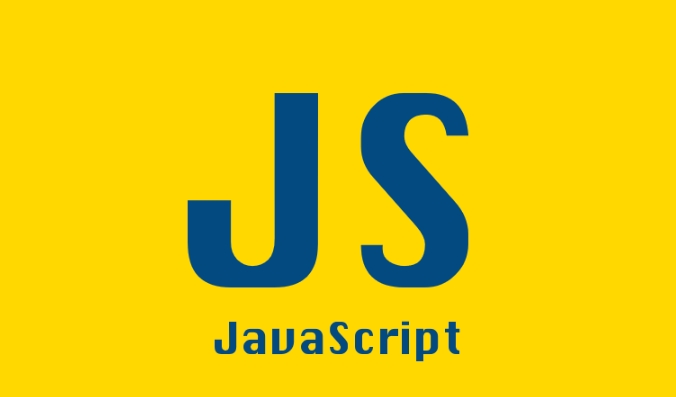JavaScript中正则表达式使用的基本原理
正则表达式在JavaScript中用于处理字符串操作非常强大。它通过定义搜索模式匹配文本,例如用/hello/测试字符串中的“hello”,默认区分大小写;使用i标志忽略大小写;利用\d或\w等通配符匹配数字或单词字符;通过g标志实现全局搜索替换;用m标志启用多行模式;捕获组(())提取子匹配内容,如从邮箱提取用户名和域名;用反向引用$1、$2重用捕获值,如交换姓名顺序;注意转义特殊字符、使用非捕获组(?:...)、控制贪婪匹配等技巧,并推荐使用工具辅助调试。

Using regular expressions in JavaScript can be a powerful way to handle string operations like searching, replacing, and validating text. They’re especially useful when you need to match patterns rather than exact strings — think form validation, parsing logs, or cleaning up user input.

Matching Simple Patterns
At its core, a regular expression (or regex) is a sequence of characters that defines a search pattern. In JavaScript, you can create a regex using either a literal or the RegExp constructor.

For example:
const regex = /hello/; const str = "hello world"; console.log(regex.test(str)); // true
This checks if the word "hello" exists in the given string. It's case-sensitive by default, so /hello/ won’t match "Hello". If you want it to ignore case, add the i flag:

const regex = /hello/i;
You can also use wildcards like \d for digits or \w for word characters. For instance, /User\d/ matches "User1", "User2", etc.
Using Flags for More Control
Flags modify how the regex behaves. The most commonly used ones are:
i: Case-insensitive matchingg: Global search (find all matches, not just the first one)m: Multiline mode (makes^and$match start/end of each line)
If you're trying to replace all occurrences of a word in a string, you'll need the g flag:
const str = "apple banana apple cherry"; const regex = /apple/g; const newStr = str.replace(regex, "orange"); // Result: "orange banana orange cherry"
Without g, only the first "apple" would be replaced.
Capturing Groups and Backreferences
Sometimes you don’t just want to find a match — you want to extract parts of it. That’s where capturing groups come in handy. You define them with parentheses ().
Say you want to extract the username and domain from an email address:
const email = "user@example.com"; const regex = /(\w )@(\w \.\w )/; const match = email.match(regex); console.log(match[1]); // "user" console.log(match[2]); // "example.com"
Backreferences let you reuse those captured values in replacement strings. For example, swapping first and last names:
const name = "John Doe"; const regex = /(\w )\s (\w )/; const newName = name.replace(regex, "$2, $1"); // Result: "Doe, John"
Common Pitfalls and Tips
Regex can get tricky fast. Here are a few things to watch out for:
-
Escape special characters: If you're looking for a literal dot
., you need to escape it as\.because.matches any character. -
Use non-capturing groups when possible: If you don’t need to extract a part, use
(?:...)instead of(...)for better performance. -
Be careful with greedy matching: By default, quantifiers like
*and?after them to make them lazy, e.g.,.*?.
Also, tools like regex101.com can help test and debug your patterns visually.
基本上就这些。 Regex takes practice, but once you get the hang of it, it becomes an essential tool in your JavaScript toolkit.
以上是JavaScript中正则表达式使用的基本原理的详细内容。更多信息请关注PHP中文网其他相关文章!

热AI工具

Undress AI Tool
免费脱衣服图片

Undresser.AI Undress
人工智能驱动的应用程序,用于创建逼真的裸体照片

AI Clothes Remover
用于从照片中去除衣服的在线人工智能工具。

Clothoff.io
AI脱衣机

Video Face Swap
使用我们完全免费的人工智能换脸工具轻松在任何视频中换脸!

热门文章

热工具

记事本++7.3.1
好用且免费的代码编辑器

SublimeText3汉化版
中文版,非常好用

禅工作室 13.0.1
功能强大的PHP集成开发环境

Dreamweaver CS6
视觉化网页开发工具

SublimeText3 Mac版
神级代码编辑软件(SublimeText3)
 PHP正则表达式验证:数字格式检测
Mar 21, 2024 am 09:45 AM
PHP正则表达式验证:数字格式检测
Mar 21, 2024 am 09:45 AM
PHP正则表达式验证:数字格式检测在编写PHP程序时,经常需要对用户输入的数据进行验证,其中一个常见的验证是检查数据是否符合指定的数字格式。在PHP中,可以使用正则表达式来实现这种验证。本文将介绍如何使用PHP正则表达式来验证数字格式,并提供具体的代码示例。首先,让我们看一下常见的数字格式验证要求:整数:只包含数字0-9,可以以正负号开头,不包含小数点。浮点
 如何在 Go 中使用正则表达式匹配时间戳?
Jun 02, 2024 am 09:00 AM
如何在 Go 中使用正则表达式匹配时间戳?
Jun 02, 2024 am 09:00 AM
在Go中,可以使用正则表达式匹配时间戳:编译正则表达式字符串,例如用于匹配ISO8601时间戳的表达式:^\d{4}-\d{2}-\d{2}T\d{2}:\d{2}:\d{2}(\.\d+)?(Z|[+-][0-9]{2}:[0-9]{2})$。使用regexp.MatchString函数检查字符串是否与正则表达式匹配。
 如何使用正则表达式在 Golang 中验证电子邮件地址?
May 31, 2024 pm 01:04 PM
如何使用正则表达式在 Golang 中验证电子邮件地址?
May 31, 2024 pm 01:04 PM
要使用正则表达式在Golang中验证电子邮件地址,请执行以下步骤:使用regexp.MustCompile创建一个正则表达式模式,匹配有效的电子邮件地址格式。使用MatchString函数检查字符串是否与模式匹配。该模式涵盖了大多数有效的电子邮件地址格式,包括:局部用户名可以包含字母、数字和特殊字符:!.#$%&'*+/=?^_{|}~-`域名至少包含一个字母,后面可以跟字母、数字或连字符顶级域名(TLD)不能超过63个字符长
 如何在 Go 中使用正则表达式验证密码?
Jun 02, 2024 pm 07:31 PM
如何在 Go 中使用正则表达式验证密码?
Jun 02, 2024 pm 07:31 PM
Go中使用正则表达式验证密码的方法如下:定义正则表达式模式,符合最低密码要求:至少8个字符,包含小写字母、大写字母、数字和特殊字符。使用regexp包中的MustCompile函数编译正则表达式模式。使用MatchString方法测试输入字符串是否与正则表达式模式匹配。
 中文字符过滤:PHP正则表达式实践
Mar 24, 2024 pm 04:48 PM
中文字符过滤:PHP正则表达式实践
Mar 24, 2024 pm 04:48 PM
PHP是一种广泛应用的编程语言,特别在Web开发领域中非常流行。在Web开发过程中,经常会遇到需要对用户输入的文本进行过滤、验证等操作,其中字符过滤是一项十分重要的操作。本文将介绍如何使用PHP中的正则表达式来实现中文字符过滤的功能,并给出具体的代码示例。首先,我们需要明确一下中文字符的Unicode范围是从u4e00到u9fa5,即所有的汉字都处于这个范围
 Golang 正则表达式的使用指南
Apr 08, 2024 pm 02:15 PM
Golang 正则表达式的使用指南
Apr 08, 2024 pm 02:15 PM
Go中的正则表达式提供了一种强大的字符串处理工具:使用regexp包进行正则表达式操作。利用正则表达式语法来匹配和操作字符串。可匹配字符类、重复字符、分组、锚点和边界符。通过MatchString匹配字符串、FindStringSubmatch提取匹配和ReplaceAllString替换字符串。应用场景包括验证电子邮件地址、提取HTML链接等。
 PHP正则表达式:精确匹配与排除模糊包含
Feb 28, 2024 pm 01:03 PM
PHP正则表达式:精确匹配与排除模糊包含
Feb 28, 2024 pm 01:03 PM
PHP正则表达式:精确匹配与排除模糊包含正则表达式是一种强大的文本匹配工具,能够帮助程序员在处理文本时进行高效的搜索、替换和筛选。在PHP中,正则表达式也被广泛应用于字符串处理和数据匹配中。本文将重点介绍在PHP中如何进行精确匹配和排除模糊包含的操作,同时结合具体的代码示例进行说明。精确匹配精确匹配意味着只匹配符合完全条件的字符串,不匹配任何变种或包含额外字
 PHP返回一个字符串在另一个字符串中开始位置到结束位置的字符串
Mar 21, 2024 am 10:31 AM
PHP返回一个字符串在另一个字符串中开始位置到结束位置的字符串
Mar 21, 2024 am 10:31 AM
这篇文章将为大家详细讲解有关PHP返回一个字符串在另一个字符串中开始位置到结束位置的字符串,小编觉得挺实用的,因此分享给大家做个参考,希望大家阅读完这篇文章后可以有所收获。PHP中使用substr()函数从字符串中提取子字符串substr()函数可从字符串中提取指定范围内的字符。其语法如下:substr(string,start,length)其中:string:要从中提取子字符串的原始字符串。start:子字符串开始位置的索引(从0开始)。length(可选):子字符串的长度。如果未指定,则提







